Having spent months climbing up out of Corona Borealis and drifting past the Big and Little Dippers, like a rollercoaster car reaching its highest point, Comet C/2022 E3 ZTF has now gone 'over the top' of its path across the northern sky and is falling south, fading in brightness and shrinking in size as it drops towards Taurus.
For northern hemisphere comet chasers and skywatchers E3’s show is almost over, but for southern hemisphere observers it is just beginning, as the comet finally becomes visible in their evening sky.
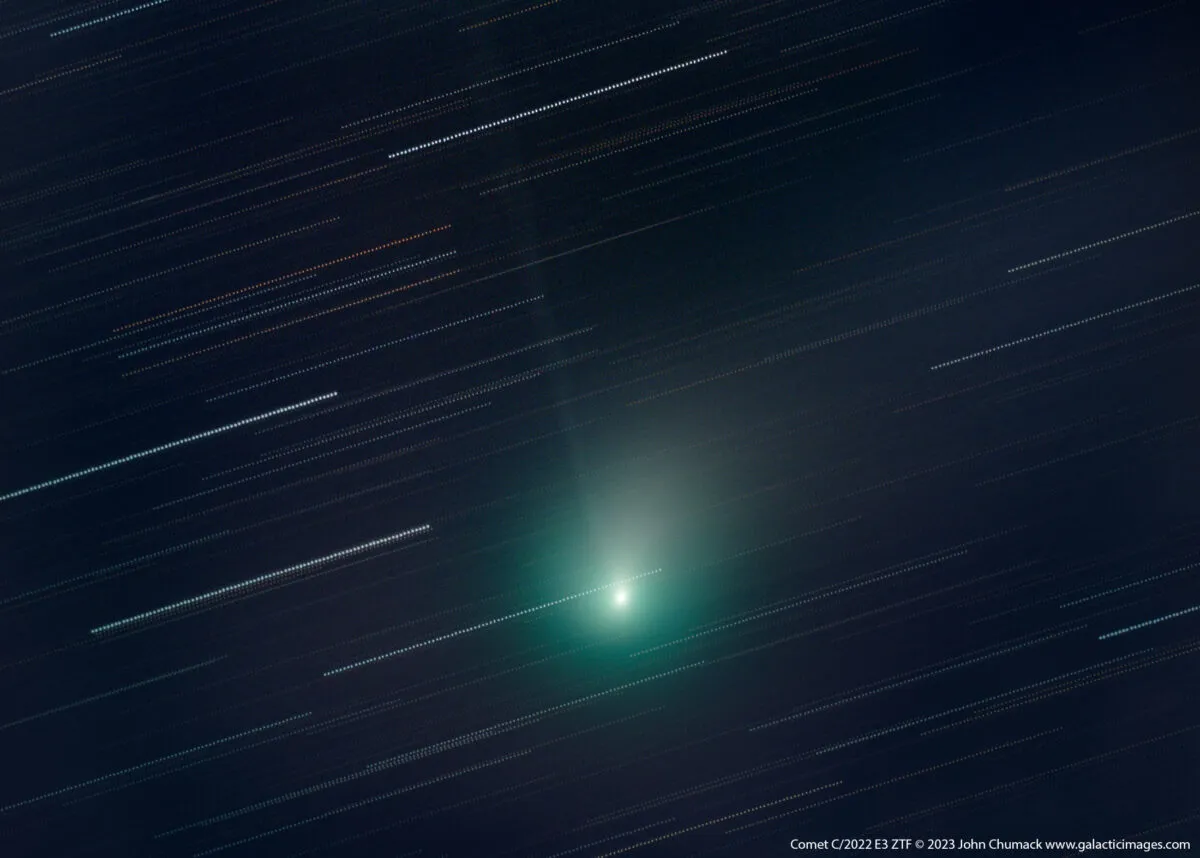
Last weekend many observers had their fingers crossed for clear skies, hoping to see Comet E3 passing very close to the bright star Capella, one of the best known in the sky.
Fortunately the weather co-operated, allowing many lovely images to be taken and shared showing the green comet and yellow-white star in the same field of view.
Comet E3's fly-by of Capella was a visual treat too.
Even with a full Moon flooding the sky with light, through binoculars and small telescopes the pair were a very attractive and striking sight, with the flinty sharpness of the brightest star in Auriga contrasting starkly with the soft, puffball glow of the comet.
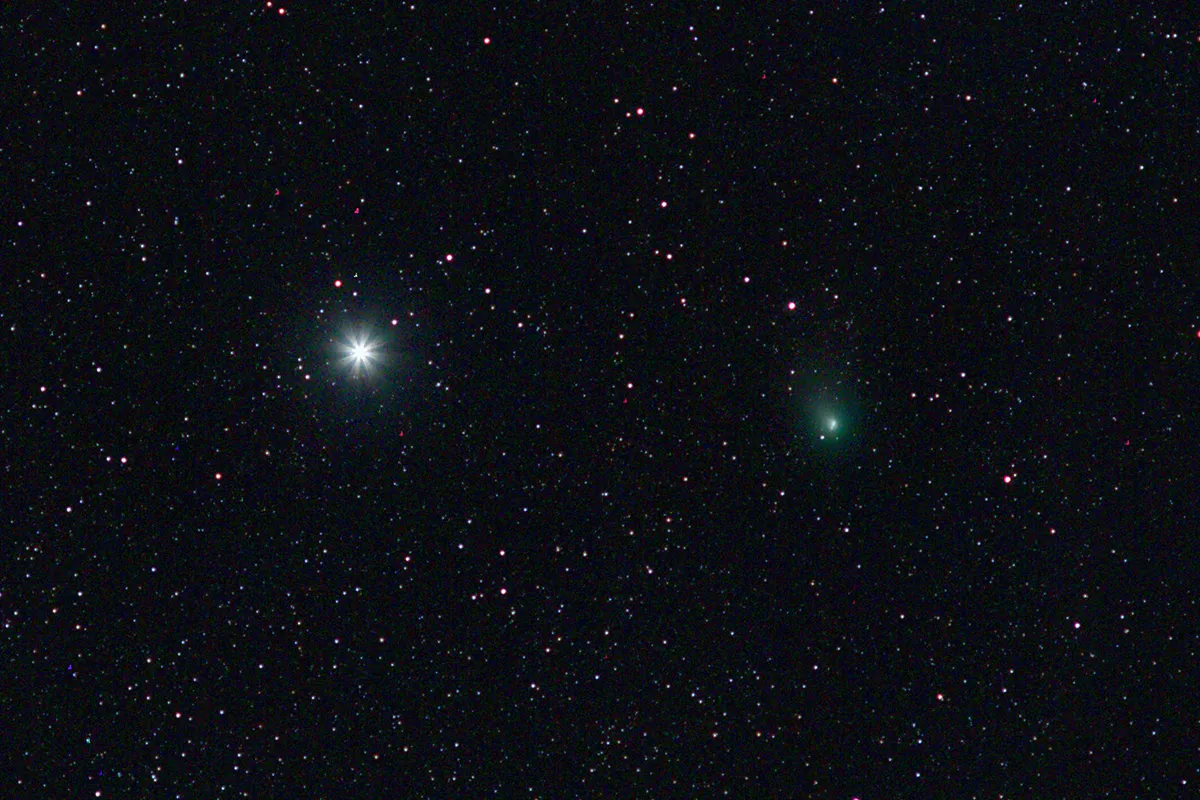
The comet has changed in appearance a lot in the past week.
Having appeared as a broad, curving fan of misty yellow-white the dust tail has become more diffuse, and the comet’s ion tail, which at one point resembled a forked serpent’s tongue of silvery blue in long exposure photographs taken through telescopes is now much more diffuse and less obvious too.
As far as its brightness is concerned, Comet E3 is fading.
few reports suggest it reached a peak magnitude of +4.6, almost a magnitude brighter than predicted, but it was certainly bright enough to be seen with the naked eye from dark sky locations.
And now? Well, it’s unkind to say E3’s best days are behind it, but it’s probably fair.
Having said that, it is still a very attractive object to observe and image, and by far the brightest comet in the sky at the moment, so it’s still definitely worth taking a look at.
In a month’s time E3 will be passing Orion, and will be so faint that only a handful of observers anywhere will still be paying it much attention.
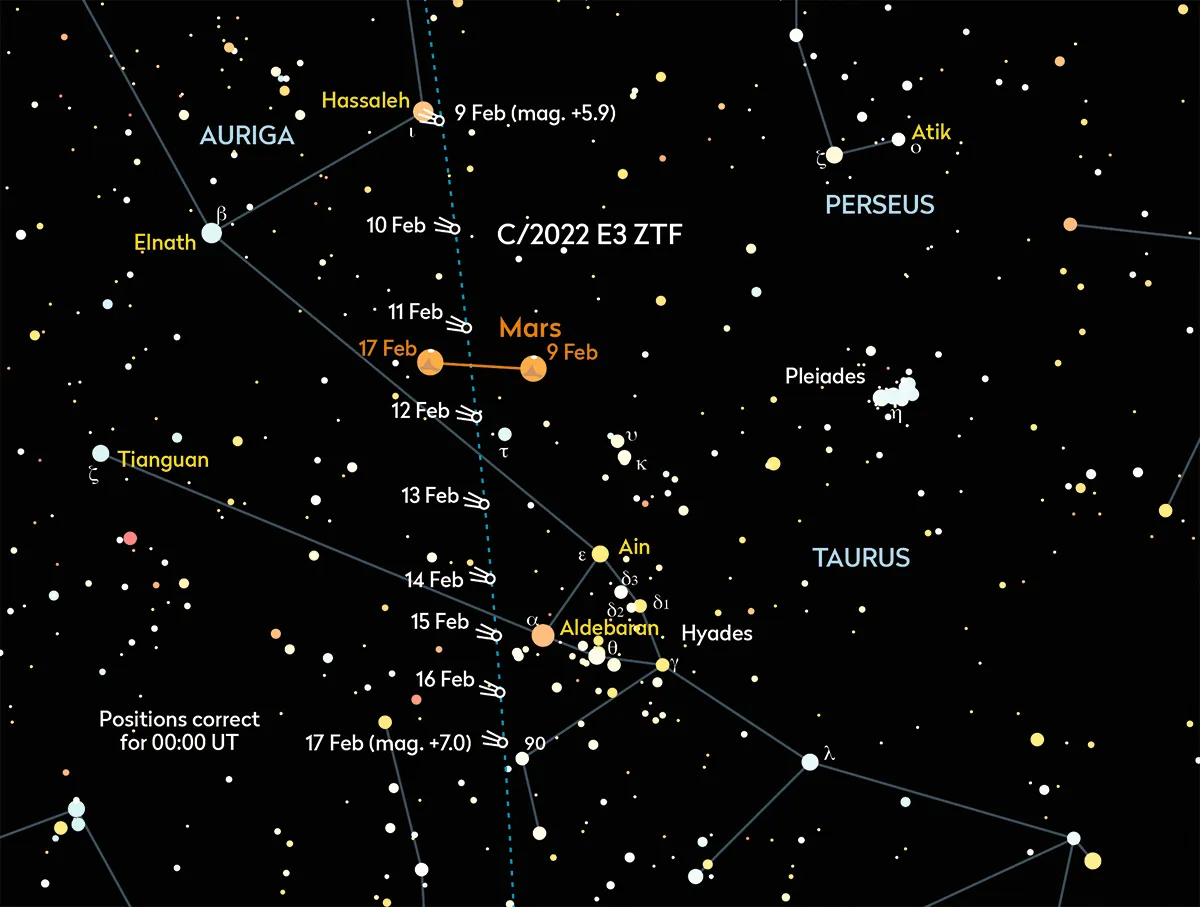
But before then it has one more treat in store for us – a close encounter with Mars!
It won’t actually be going anywhere near Mars, of course; it will just appear to pass close to it in the sky because the two will lie along the same line of sight as seen from Earth.
This celestial get together won’t be visible to the naked eye, the comet will be too faint for that, but for a few nights we’ll be able to enjoy the rare sight of a comet and a planet in the same binocular field of view.
So, if your sky is clear on the evenings of 10, 11 or 12 February, swing your binoculars towards Mars, nudge them a little to the Red Planet’s right, just above the V of the Hyades star cluster, and if your sky is dark enough you’ll be able to see a faint smudge glowing there – Comet E3.
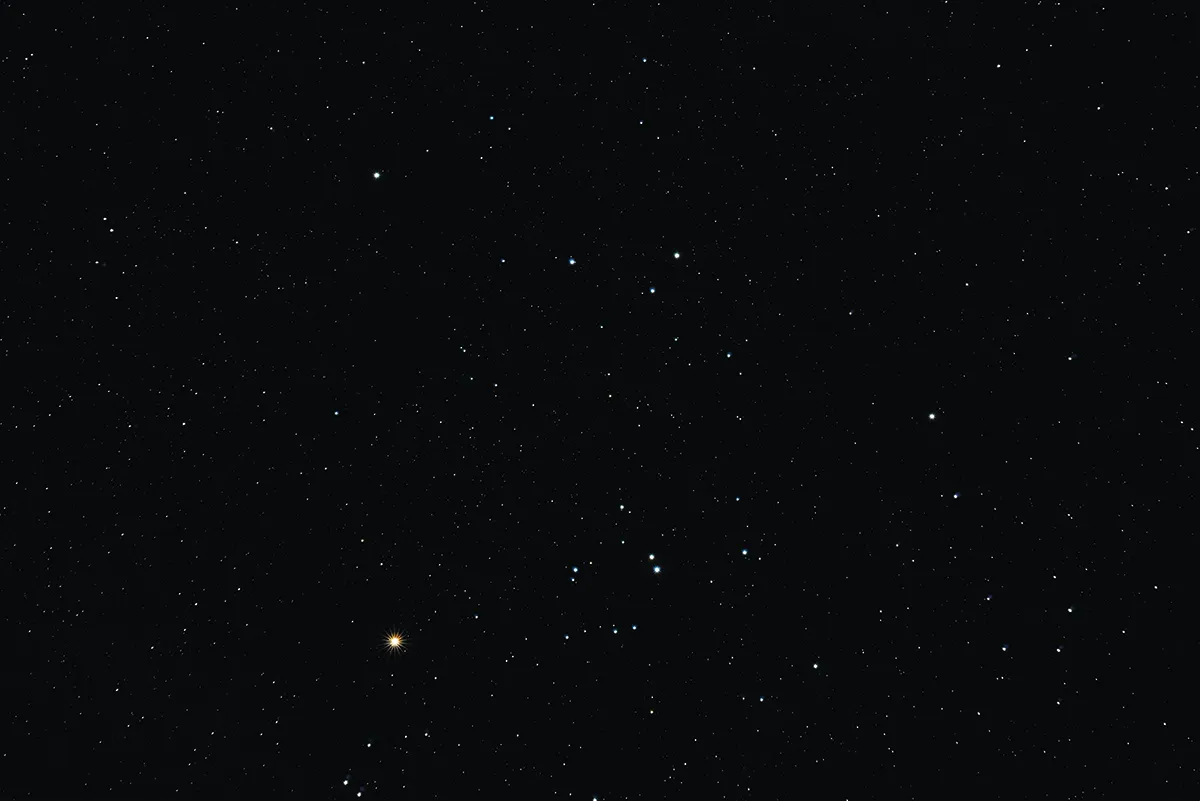
After wandering past Mars E3 will continue to fall south, passing just one and a half degrees away from the orange star Aldebaran late in the evening on 14 February, Valentine’s Day.
By then it should be glowing at around 7th magnitude, little more than an out-of-focus star in binoculars and telescopes.
If you haven’t seen E3 yet there is still time. Although it hasn’t been a Great Comet like Hale Bopp (and was never going to be) it has been a lovely comet to look at, and has been a real treat for visual observers and imagers alike.
Comets as colourful, dynamic and pretty as E3 are rare, so we’ve been lucky to have it visit our sky.
When will the next bright comet be visible? We don’t know.
But it’s out there right now, lurking in the cold depths of the outer Solar System, just waiting to be found by the robotic instruments of an automated survey or by an amateur astronomer standing in their garden, sweeping the sky with their telescope…!
Comet E3: the story so far
A sharp but very welcome cold snap in mid January meant that many UK observers enjoyed their first views of Comet C/2022 E3 ZTF - which by that time had become known as the 'green comet' - and were able to see with their own eyes the comet that observers in other parts of the world have been enjoying.
And it was definitely worth the wait.
Find out what to expect from Comet C/2022 E3 ZTF in February
For more regular stargazing advice, sign up to receive the BBC Sky at Night Magazine e-newsletter
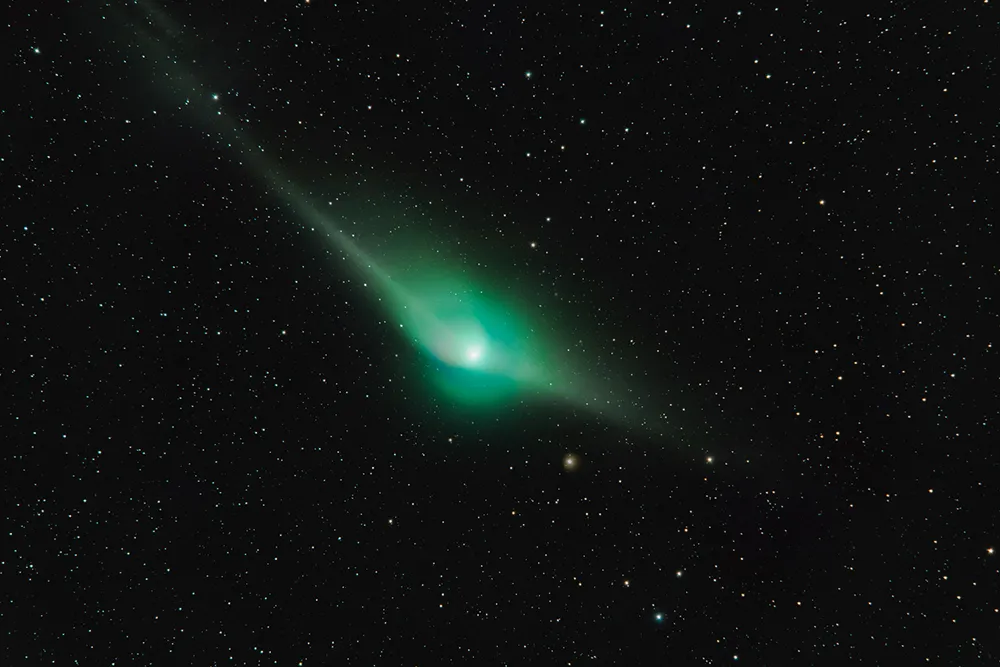
The comet has been observed and photographed by many people around the world, posting their images and observations online
Despite this, many UK observers hadn’t seen it with their own eyes since the start of the year, and some hadn’t seen it at all yet.
There was a lot of excitement about what the comet would look like.
How much brighter would it be? How long would the gas tail be? How much more obvious would the dust tail be?
Let's remind ourselves all about this wonderful comet, what it's been doing so far, and then take a look at what we can expect. Read on...
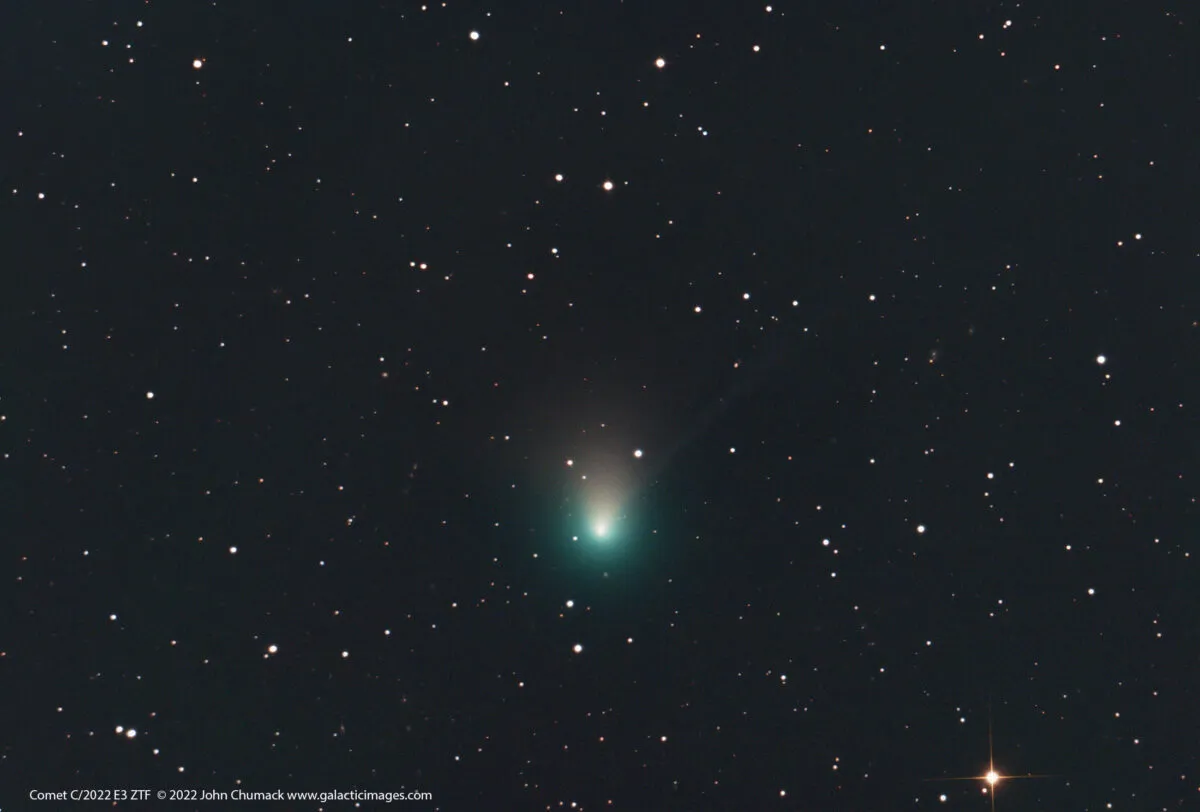
C/2022 E3 (ZTF) is a long period comet that was discovered by the Zwicky Transient Facility (hence the catchy name 'ZTF') on 2 March 2022, using the 1.2-m, f/2.4 Schmidt telescope at Mount Palomar
When it was discovered it was just a tiny, 17th magnitude smudge in Aquila, five times further from the Sun than Earth.
When astronomers crunched the numbers they found comet C/2022 E3 (ZTF) would reach perihelion – its closest point to the Sun - on 12 January 2023 and would then make a close approach to the Earth in early February 2023, when it might reach 6th magnitude.
Find out more about observing C/2022 E3 (ZTF) in our video guide to stargazing in February 2023 below:
Where is C/2022 E3 (ZTF) at the moment?

Comet C/2022 E3 ZTF reached perihelion on 12 January, its closest point to the Sun.
And that’s when things have begun to get interesting for comet observers here on Earth, because the comet passes by our world as it heads away from the Sun, and we get our best views of it.
Comet C/2022 E3 ZTF: the story so far
Since early December 2022 Comet E3 has been moving with all the speed of a line for a post office counter at Christmas.
The weather over many parts of the UK over the festive period was pretty atrocious.
Christmas was wet and the New Year brought strong winds and lashing rain, so many amateur astronomers were yet to have their first views of Comet C/2022 E3 ZTF.
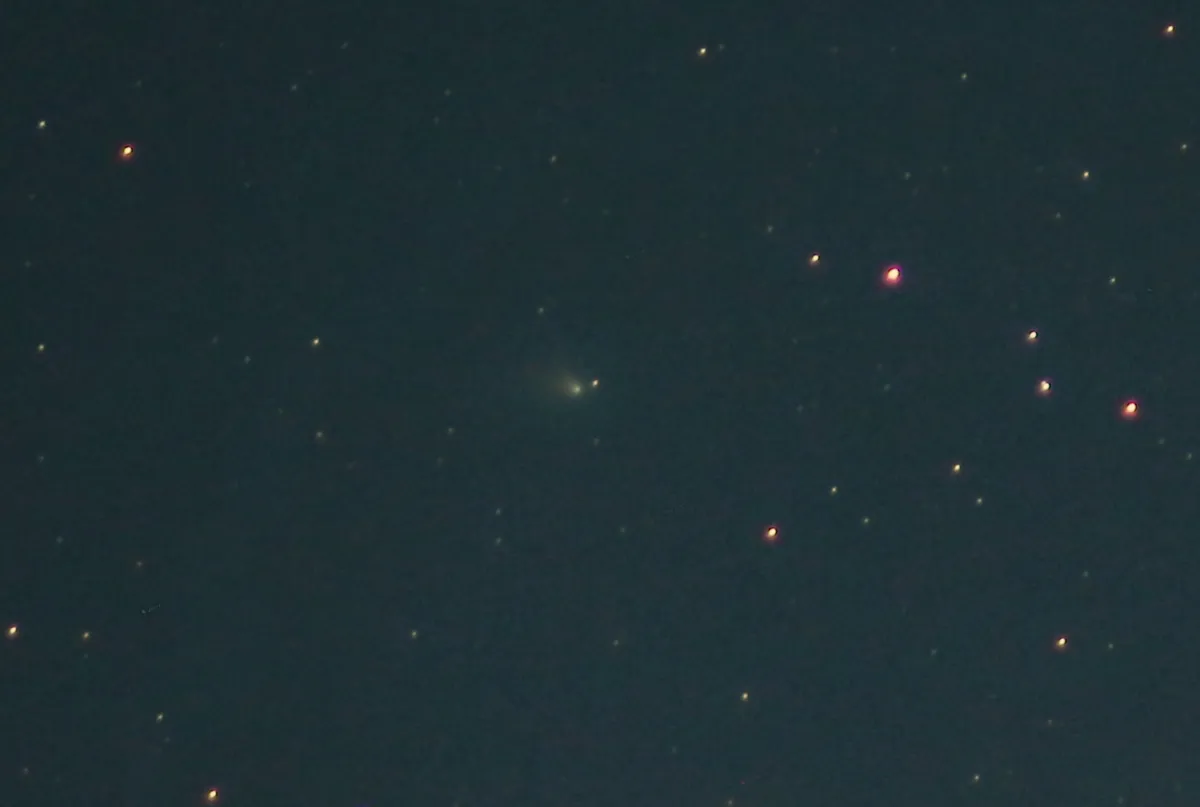
Firmly embedded within the constellation of Corona Borealis, the Northern Crown, it was just a tiny smudge at first, little more than an out of focus star, but as December passed it grew brighter and developed an ion tail too.
As 2022 came to an end Comet C/2022 E3 ZTF was a small, faint smudge glowing quietly within the curved crown of Corona Borealis.
By mid-January it had begun to brighten, and long exposure photographs taken through telescopes showed it had grown a pair of interesting looking tails.
As it finally left Corona behind and headed up towards the tail of Ursa Major, the Great Bear, comet-watchers were quietly confident that, having behaved itself up until then, and followed its predicted brightness curve quite faithfully, E3 was on track to reach a peak magnitude +5.5, making it easily visible in binoculars and possibly visible to the naked eye for those observers blessed with very dark skies.
Essentially, E3 was expected to be a 'nice' comet, something worth looking for but not expected to be anything special.
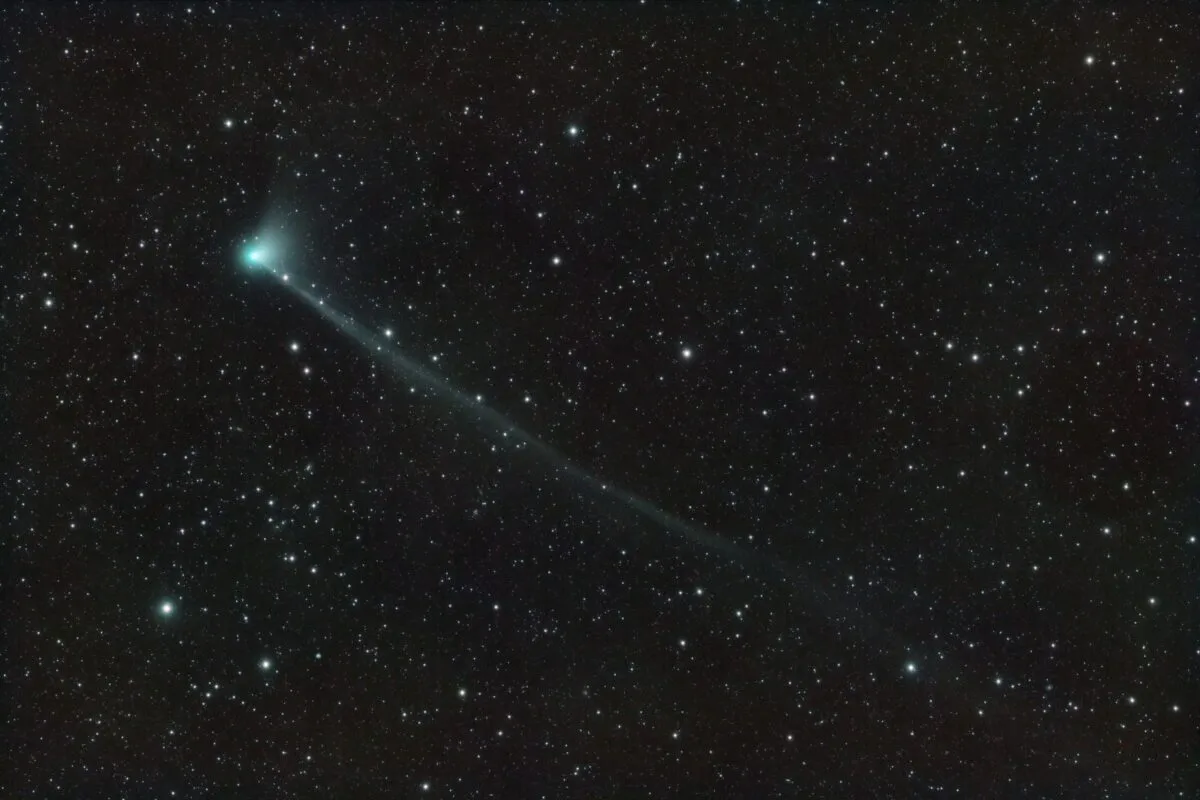
Then the comet crossed the Earth’s orbital plane, and it began to look very special.
As our line-of-sight to the comet changed the yellow-white dust tail that had curved off to one side of swung around behind its bright head, and an 'anti-tail' – a spike of bright material – appeared on the opposite side of the head too.
The comet’s blue ion tail, made of gases blown off the nucleus by the solar wind, split into two very definite strands, and the most detailed images showed puffs and wisps of material working their way down it.
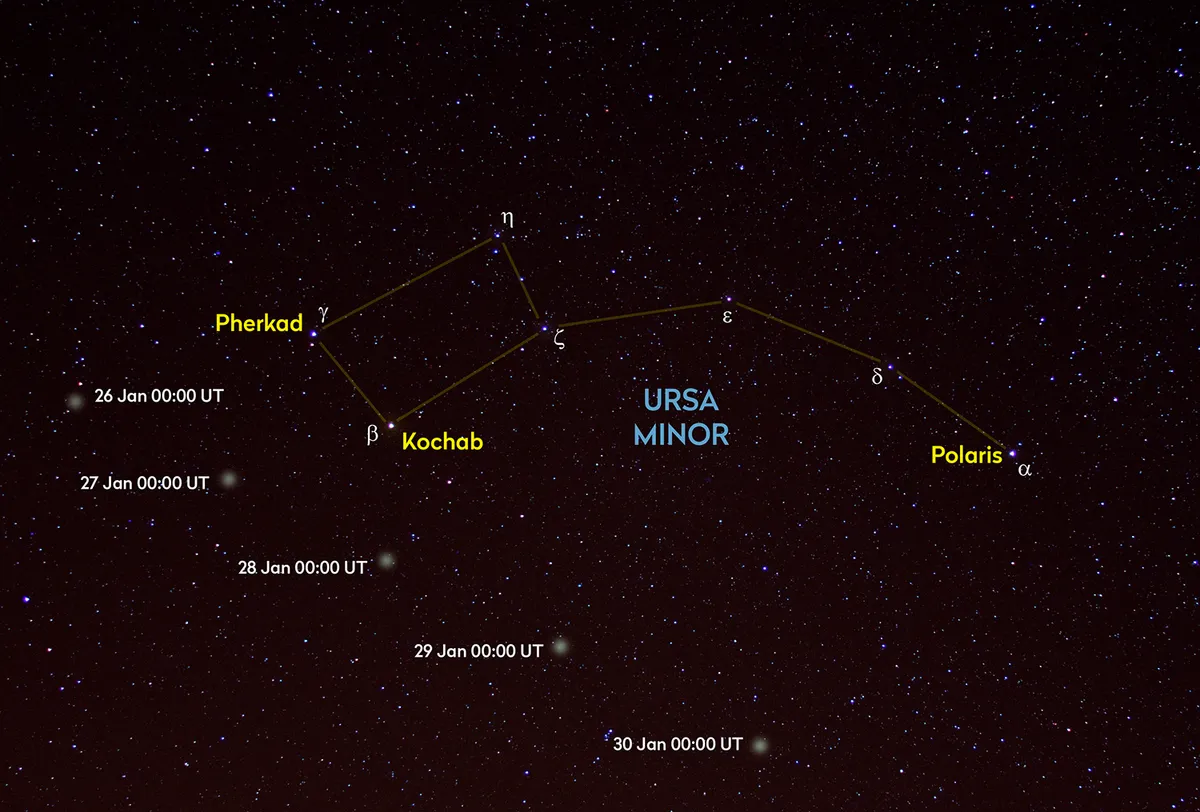
As January drew to a close E3 moved swiftly past Polaris and was is an unexpected delight.
Because of E3’s proximity to the Plough and the Pole Star many sky-watchers with little or no previous experience of observing comets were able to find it quite easily and many were seeing a comet for the very first time.
It might not have looked quite like the amazing photos being shared all over social media, but that didn't matter: we were seeing a comet with our own eyes.
Many of those beginners were thrilled to be taking their first ever comet photos too, without having to worry about the dark arts of processing or stacking: cameras pointed roughly towards the Pole Star are capturing the comet as a pale, out-of-focus star.
On the morning of 30 January several very experienced observers reported seeing the comet easily with their naked eye once the Moon had set.
Comet C/2022 E3 ZTF observing notes
I enjoyed wonderful views of E3 early on the morning of 2 January.
Going out at just after 4am I set up my camera and tracker and pointed them towards the comet, and spent the next two hours taking lots of photos.
The comet was bright enough to be recorded as a tiny smudge on single, untracked short exposures of several seconds through my 135mm lens, and much more obvious when the exposure time was increased to 30s or longer and I swapped my 135mm lens for a 300mm lens, tracking the stars.
When I got home and stacked a lot of my images together the comet looked very pretty, with a short but broad fan-shaped dust tail.
Its much fainter ion tail was only just there on my images, but as I was taking them from the middle of light-polluted Kendal, UK, that wasn’t a huge shock.
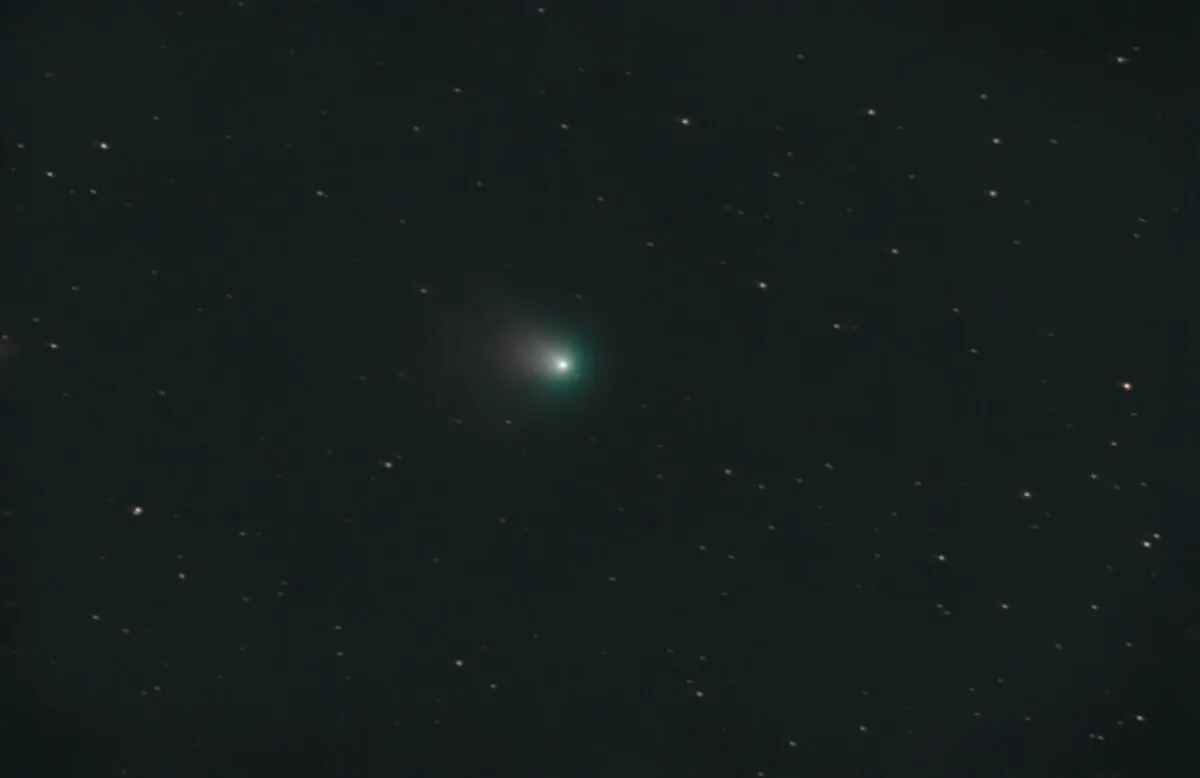
It was a while before I managed to get another good view of Comet E3.
Since Christmas, my part of the world had been battered relentlessly by weather front after weather front, bands of wind and rain sweeping over us one after another.
I had a near miss on the morning of 11 January when I was lured out of bed by the light of the Moon shining through my window at 4am.
But by the time I had reached my observing site the sky had clouded over and rain resumed, forcing me to throw a carrier bag over my camera and seek shelter.
Observers and photographers elsewhere, with better weather and clearer skies, were reporting that Comet C/2022 E3 ZTF was still small but developing nicely and remained on track to be visible to the naked eye from dark sky locations at the beginning of February, when it was at its closest to us.
Although a bright Moon affected photography, images taken through telescopes tracking on the comet showed its thin ion tail is lengthening and its broader dust tail visible too.
My best views of the comet at that point came during a brief trip north to see family in a dark part of Scotland during the last weekend of January.
Ever the optimist I took my camera equipment with me, despite every weather app on my phone insisting the sky would be cloudy the whole time I was there.
So, of course, when we arrived the sky was perfectly clear, strewn with so many silvery stars it looked like someone had splashed droplets of mercury across it, and even before our car engine had cooled I was set up and taking images of the comet shining close to Kochab.
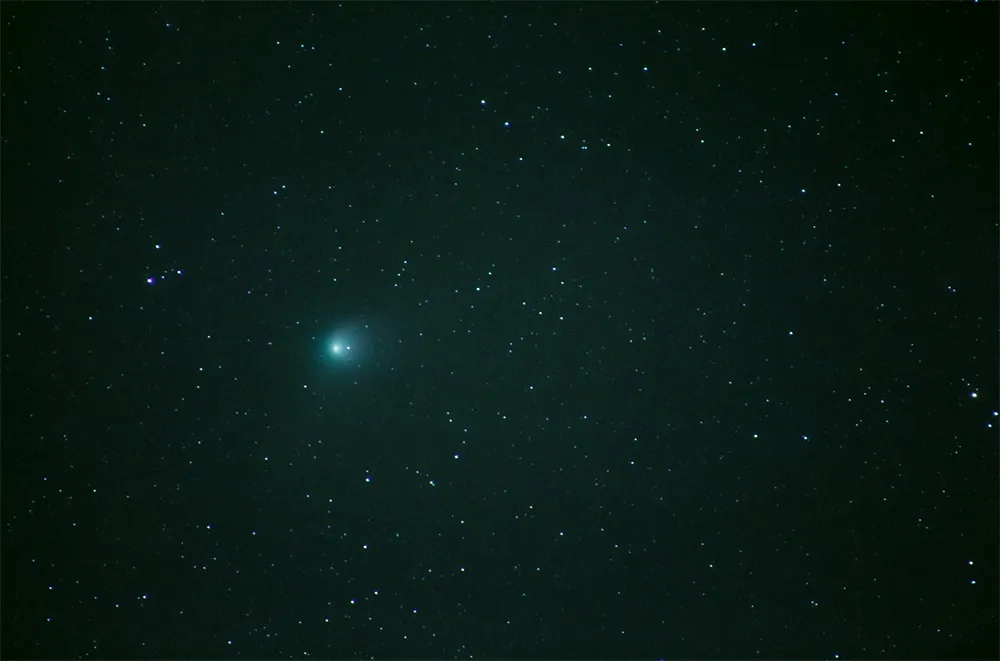
After stacking, they showed the ion tail very clearly, and the coma of the comet as a bright, glowing hood.
During late January, most people were viewing it through binoculars, seeing it as a small but definite smudge, while more experienced comet observers looking at E3 through their telescopes reported seeing faint jets and plumes of material within its coma too.
But as the Moon grew larger and brighter in the sky those became more difficult to see.
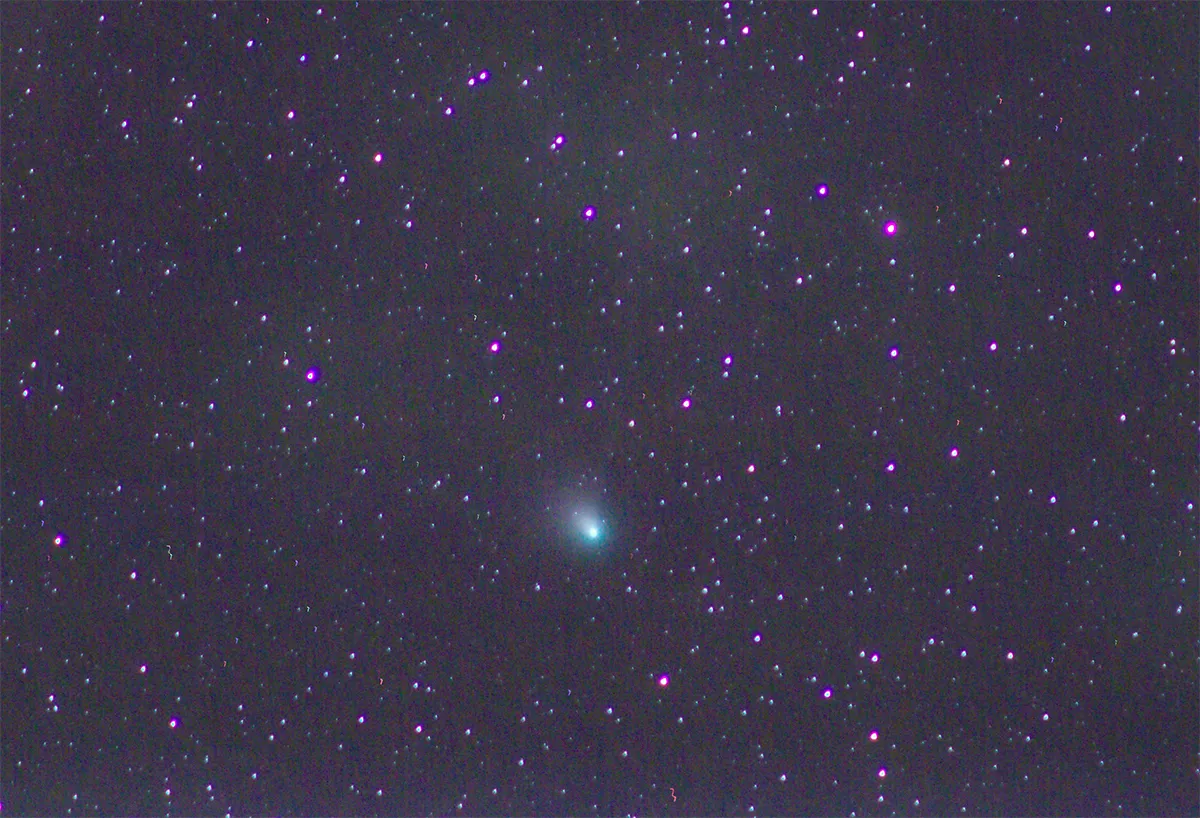
The comet’s head was still showing a beautiful green hue on images, and some observers reported seeing a subtle green tinge to the comet when looking at it through telescopes.
The comet’s gas or ion tail – the straight one that is pushed behind it by the gusts of the solar wind – continued to lengthen nicely.
Stacked, long exposure images taken through telescopes showed a lot of detail in the tail, twisted into knots here and there, and some showed the tail split into two or more fine strands.
The comet’s dust tail, made of particles of dust that have drifted away from the comet, began to broaden into a fan and also got brighter, giving the comet an elongated appearance through binoculars and telescopes.
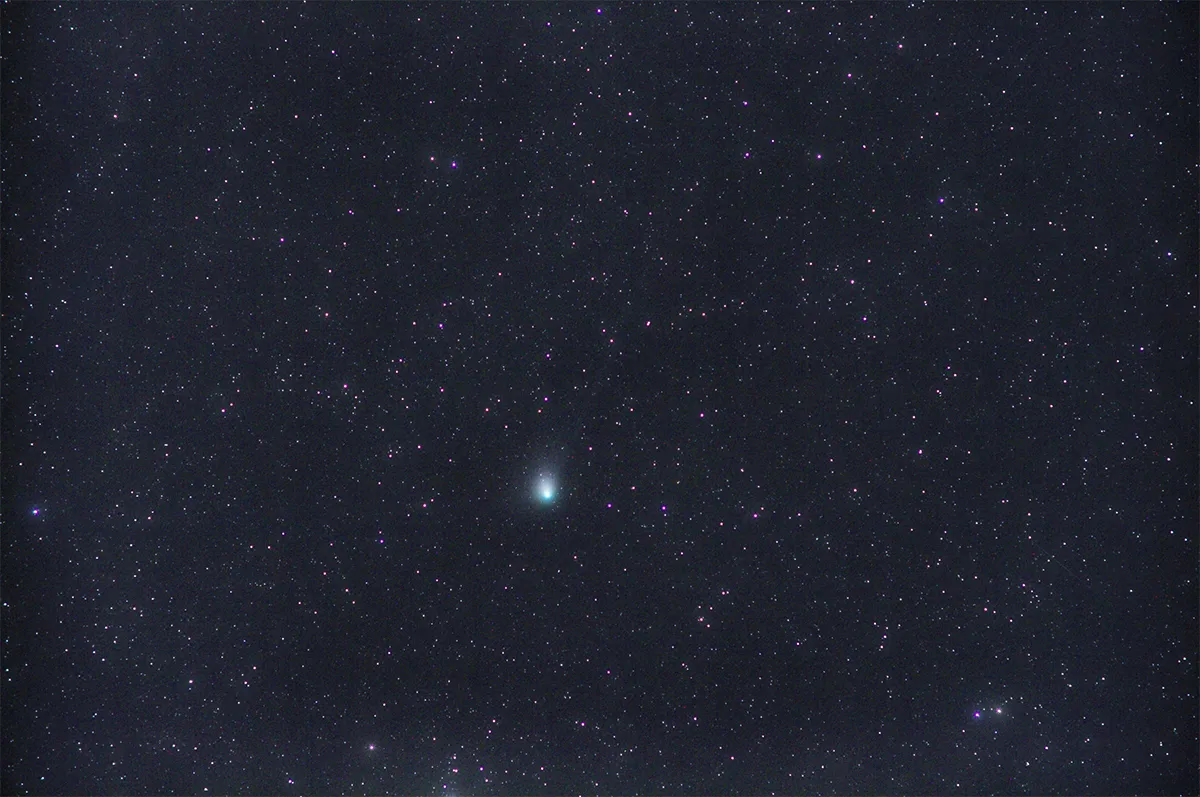
Long exposure images taken with telescopes and cameras tracking the comet as it moves across the sky showed its ion tail flapping and swaying in the solar wind, like the tail of a kite, and there was at least one 'disconnection event' where the ion tail effectively snapped off then grew back again.
The comet’s dust tail grew in size and brightness too, taking on the appearance of a broad fan as the angle of our line of sight to the comet changed.
Many images taken on Sunday 22 January showed the comet is sporting an 'anti-tail': a spike of light on the opposite side of its head.
It brightened more, becoming more obvious in binoculars and telescopes, and we saw further development and growth of its tails.
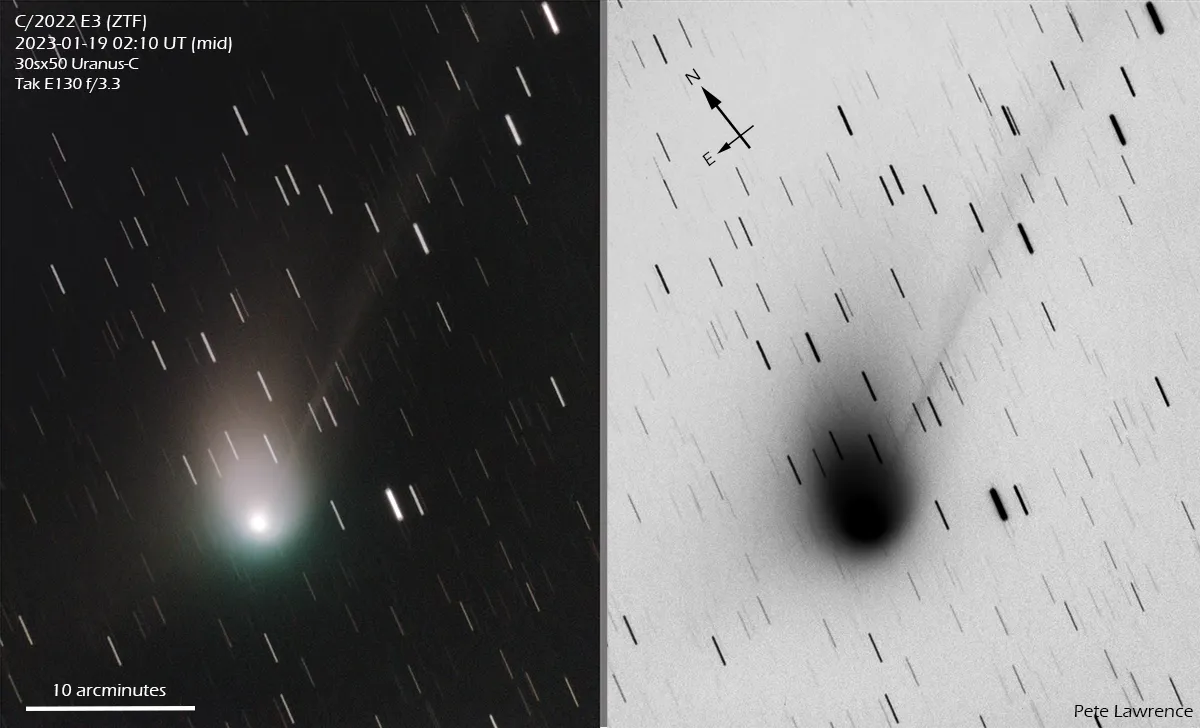
The Sky at Night presenter Pete Lawrence sent us the pic above of Comet C/2022 E3, captured on the morning of 19 January.
Pete says: "This was an experimental image using a planetary camera (Player One Uranus-C) to take 30s shots over a 25 minute period centred on 02:10 UT.
"The comet was just climbing over my roof top when I started this sequence and the skies were a bit hazy, eventually clouding over completely. Telescope used was a Takahashi E-130 Astrograph at f/3.3.
"I've created a negative mono image version (right) to emphasise the ion tail. This was just starting to record on each 30s frame but is shown nicely here after registering and stacking on the comet."
Unlike many that came before it, Comet E3 didn't lett us down! It wasn't a Great Comet by any means, nowhere near as bright as comets like NEOWISE or Hale-Bopp, but it was definitely a great comet to photograph, beautiful and fascinating in its own right, definitely the most photogenic comet since NEOWISE.
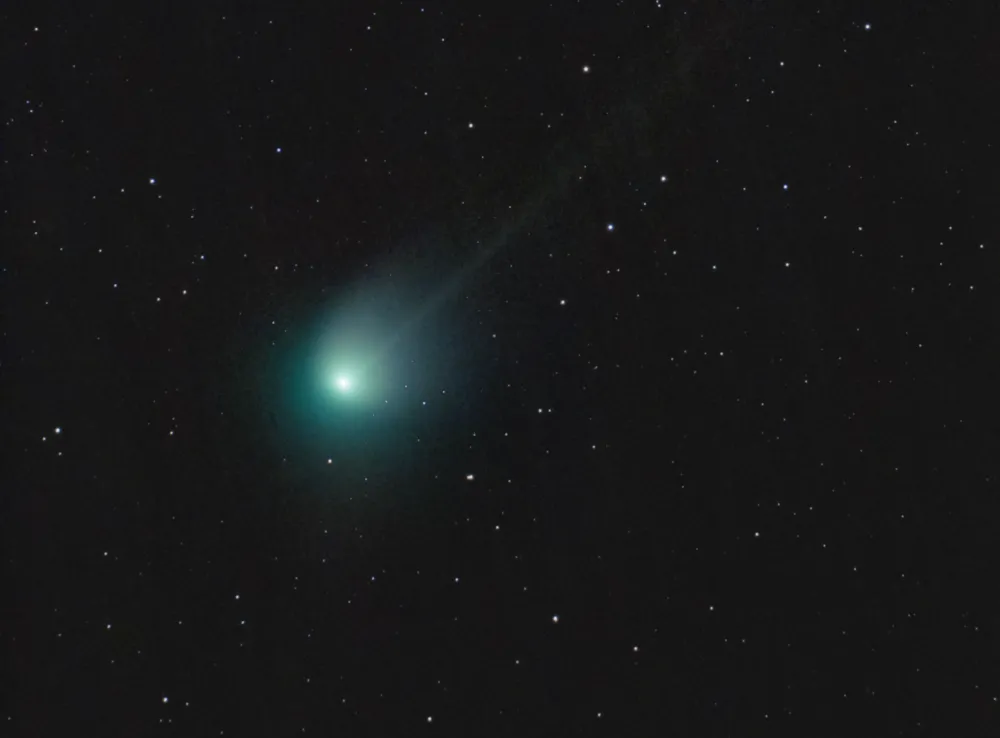
Social media platforms were full of posts telling their readers how this "beautiful green comet" – not seen since cave men looked up at the night sky – was now visible, and would "zoom across the sky" at the end of the month.
In reality, Comet E3 was a very small and very faint object in the evening and morning sky.
Lots of non-astronomers were getting very excited when they read on Twitter and Facebook that it was "visible in binoculars".
But it was so small and so faint, really little more than an out of focus star still, that most people may have gone right past it as they swept the stars with their binoculars
What does Comet E3 ZTF really look like?
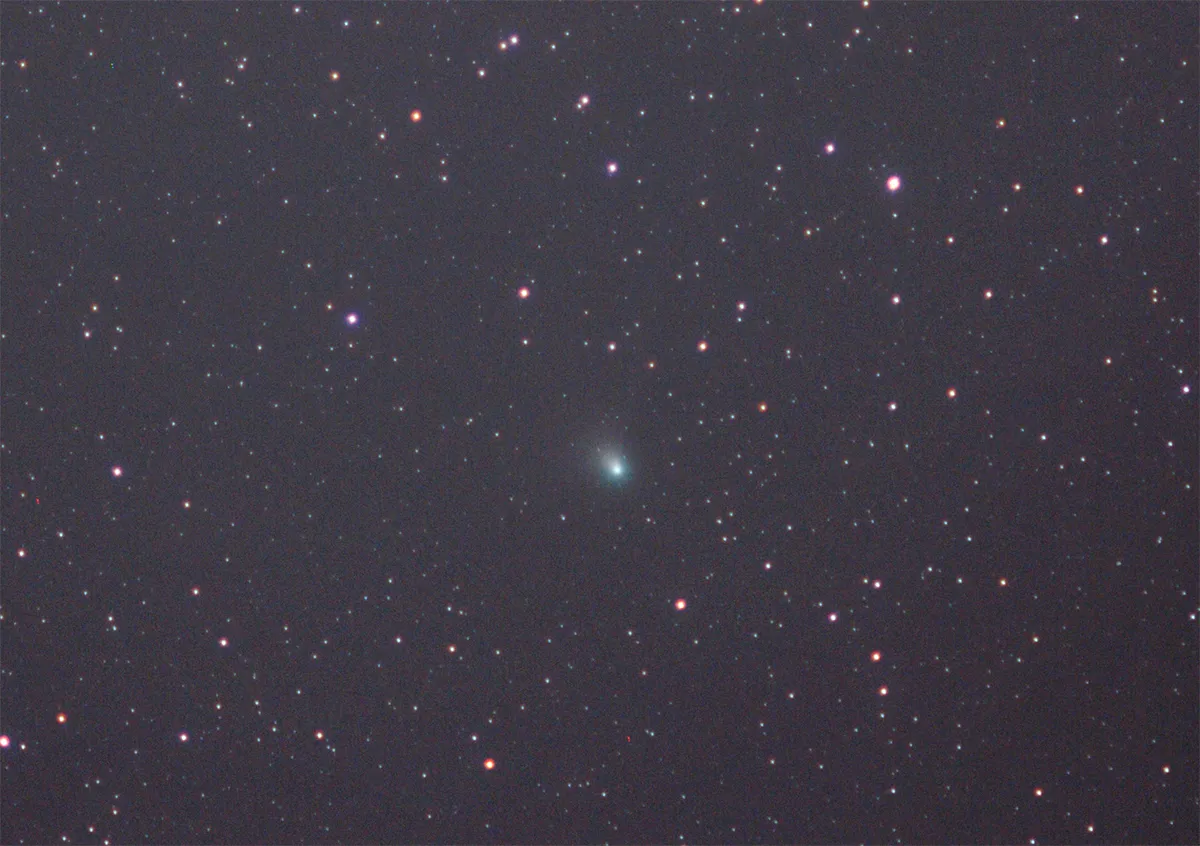
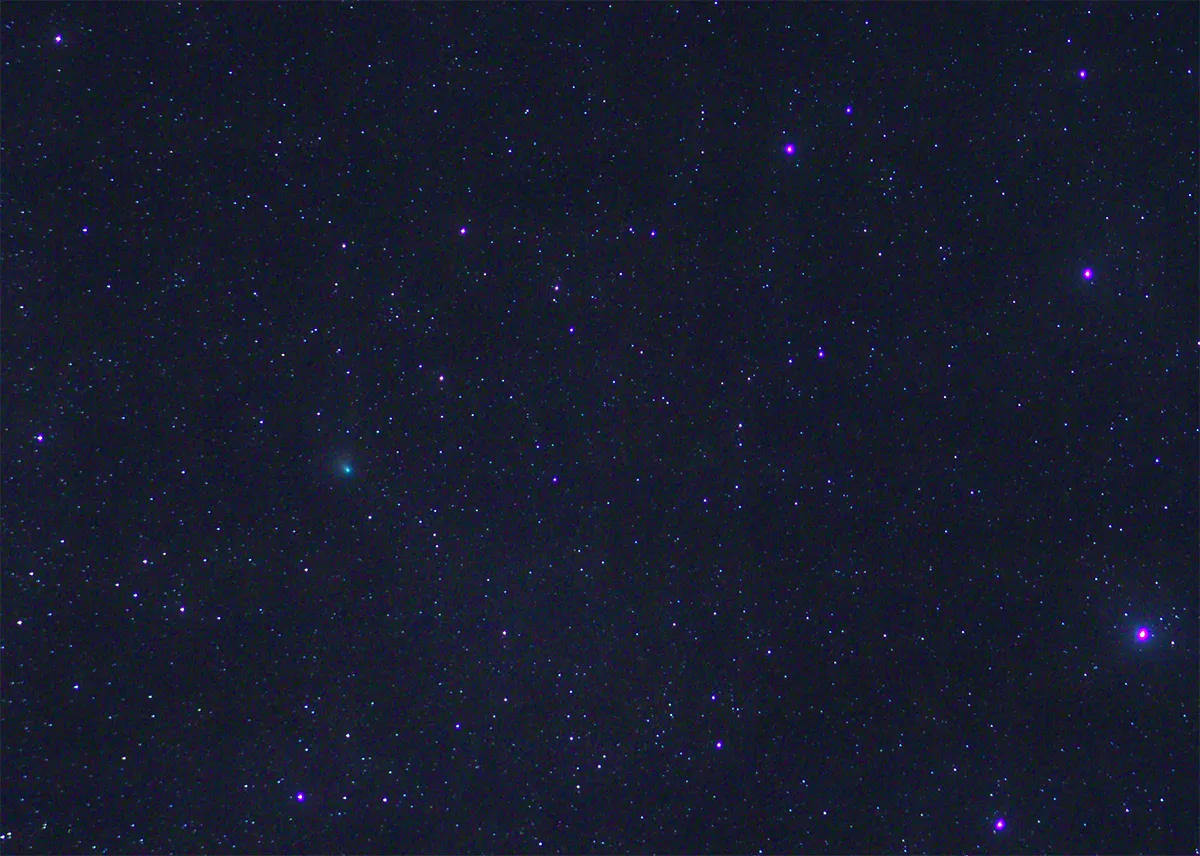
It's true that Comet C/2022 E3 ZTF was smaller and less obvious in the sky than Comet NEOWISE was a couple of years ago, and looked nothing like Comet Hale-Bopp, the 1996 comet so many people remember so fondly.
At its closest to Earth, E3 moved rapidly across the sky, enough that it was trailing on long exposure photos.
E3 was like one of those Olympic cyclists, going slowly round and around the track, waiting for the starting gun to fire.
Passing perihelion was that gun going off, and the comet began to pick up speed and really dig in as it pushed up into and through Bootes, through Hydra and then towards and past Polaris.
Comet E3 then began to head away from the Sun and towards us, and its motion across the sky grew faster and its position in the sky changed more noticeably from night to night, or morning to morning, depending on when you were looking.
What next for C/2022 E3 (ZTF)?
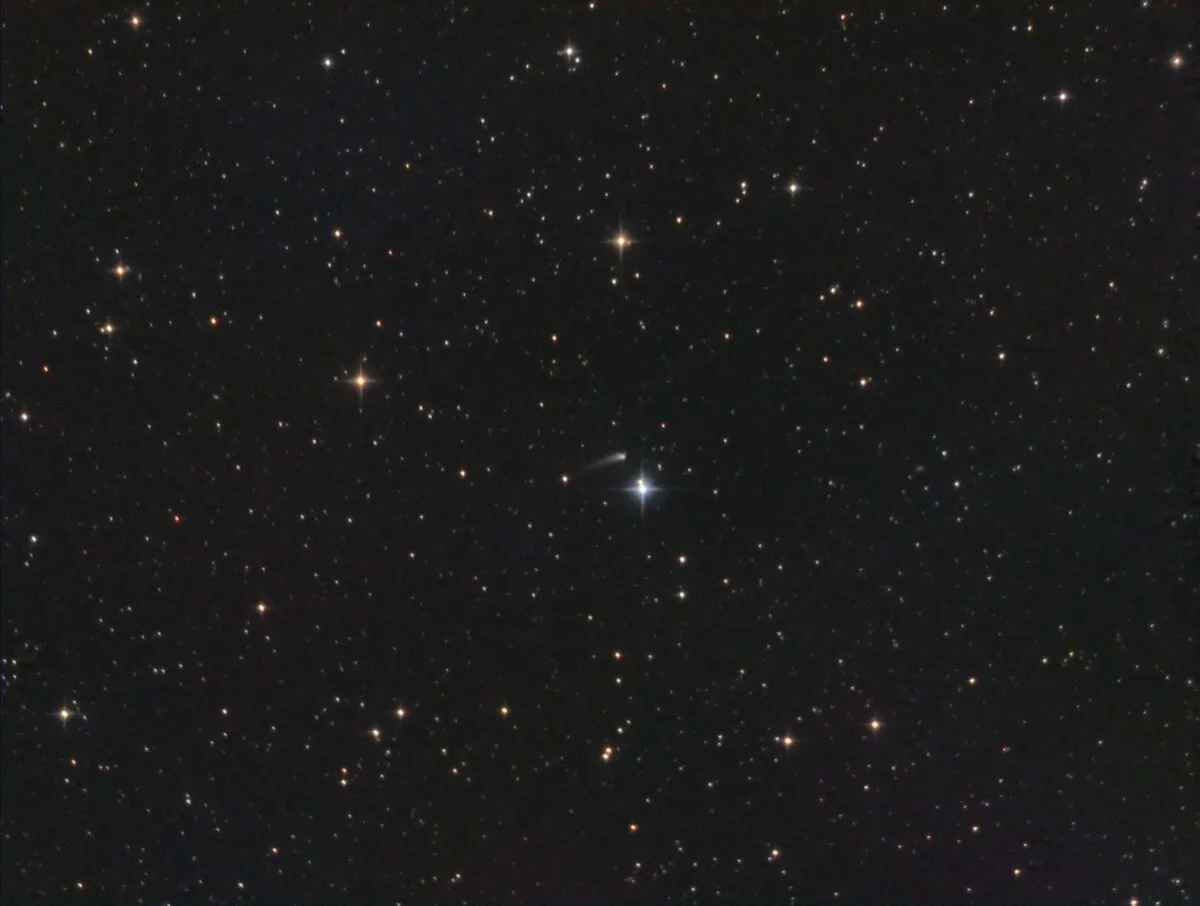
By the time it has a romantic Valentine’s Day date with Aldebaran and the Hyades star cluster over 14/15 February the comet will have faded to the point where it will definitely will only be visible in binoculars and telescopes – unless it does something totally unexpected.
Comets like to do that.
By the end of February the comet will be low in the southern sky after sunset, passing to the west of Orion, a little harder to see each evening. But as it fades from view we’ll have some lovely memories of it.
Comet E3 isn’t – and was never going to be – a Great Comet, with a long NEOWISE-like tail painted on the sky.
But it has been a great comet for many observers, and for many it has been their first comet, so it will always be special.
And it has left many people looking forward to the appearance of the next bright comet – whenever that will be…
Have you managed to observe or photograph Comet E3? Let us know by contacting us via contactus@skyatnightmagazine.com.
